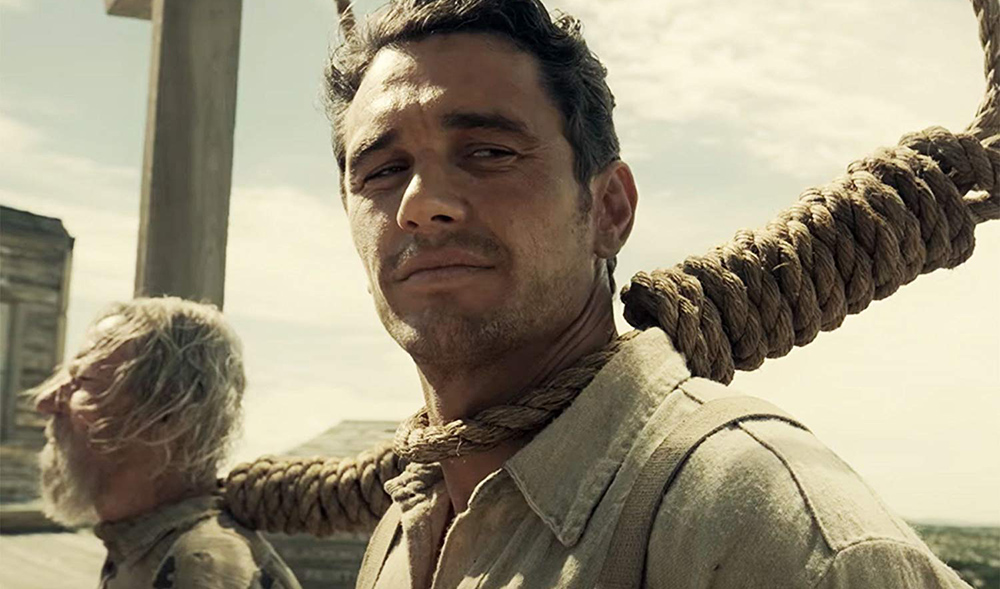The Ballad of Buster Scruggs portrays a world of shocking violence, brutality, and indifference to human life, but does that mirror reality?
I’m a big fan of both Westerns and the Cohen Brothers, so I was eager to see their latest offering on Netflix, The Ballad of Buster Scruggs (2018), an anthology of six short films set in the Wild West. The stories were filled with interesting characters and scenarios, beautiful cinematography, and of course all the Cohen Brothers’ hallmarks, but something didn’t sit right with me.
Movies about the “Wild West” are almost always violent, focusing on battles with Plains Indians and Comanches, gunfights, bank robberies, and outlaws. The Ballad of Buster Scruggs focuses on a wide variety of Western life. We see traveling showmen, a prospector, a wagon train, and a coach ride. Sudden, brutal violence and indifference to human life ties them all together. At the end, I came away feeling sad, particularly after the wagon train short.
There’s no denying life could be brutally harsh on the nineteenth century American frontier. Disease, high infant mortality, the Indian Wars, lack of advanced medical care, and an austere environment all combined to make survival challenging at best. But hundreds of thousands of people did survive, thrive, and lived out their lives on the frontier, just like any other time.
Because violence has always been a part of popular culture when it comes to the Old West, the general public just assumes it was lawless and violent, with outlaws and cattle rustlers, roving bands of marauding savages, and dangers of every variety lurking just around the corner. But scholarship over the past few decades has thoroughly debunked this myth. Thomas J. DiLorenzo writes:
[Historians] “Terry Anderson and P. J. Hill affirm that although “[t]he West . . . is perceived as a place of great chaos, with little respect for property or life,” their research “indicates that this was not the case; property rights were protected and civil order prevailed. Private agencies provided the necessary basis for an orderly society in which property was protected and conflicts were resolved.”
A panel of historians at the 1999 Western History Association in Portland, Oregon concluded that violence was not a principal factor in the development of the West. They agreed with Arizona historian Bert Fireman when he said “The West was not won by guns. It was won by shovels and sweat.”
In The Ballad of Buster Scruggs’ opening vignette, the titular character (an outlaw minstrel) saunters into a bar and immediately gets into a violent confrontation. He dispatches his opponent in an entertaining and unique manner, then goes into a song and dance routine before being drawn into two more gunfights in the street. All the while the townsfolk act like it’s just another day.
The gunfight, so iconic to Western films and literature, didn’t happen often in real life. Shootouts like the one at the OK Corral in Tombstone, Arizona were infamous precisely because they were so rare. Dime novels capitalized on these episodes for a profit, and the public perception spread. Silverton, Colorado staged gunfight reenactments for tourists until the 1970s, when high-minded townsfolk shut them down for being “an inaccurate portrayal of their town’s history.”
That’s not to say violence and criminality were unheard of on the frontier. Most western emigres were young men, veterans of the Civil War or Mexican-American War who were looking for a fresh start. Many wanted to ‘strike it rich’. Mining camp newspapers frequently decried lawlessness and advocated harsh punishments for lawbreakers. But capital crimes like murder were rare.
The Ballad of Buster Scruggs’ portrayal of the American West ranges from the realist to the absurd. It perpetuates popular stereotypes while bringing to life that period in vivid detail, making the gratuitous violence seem that much more real. I’m torn when it comes to films like these. On one hand, it’s a gross and ahistorical fantasy. On the other, it’s just so damn entertaining. It’s easy to see why, like the character of the old prospector in this film, the myths of the Wild West refuse to die.

